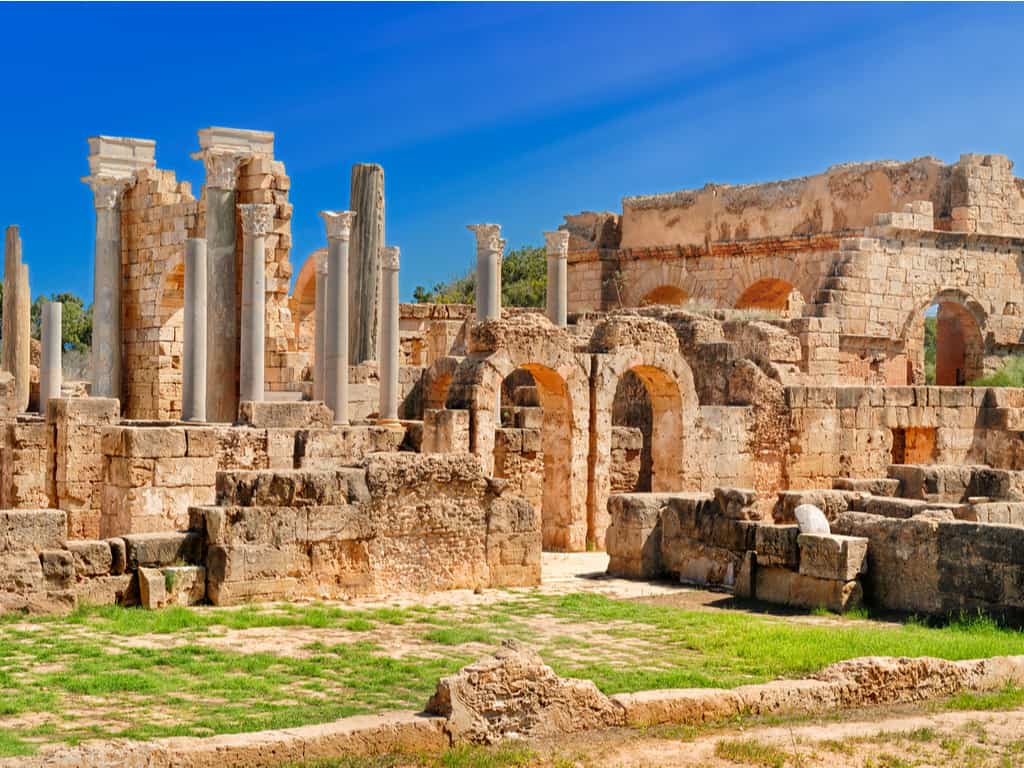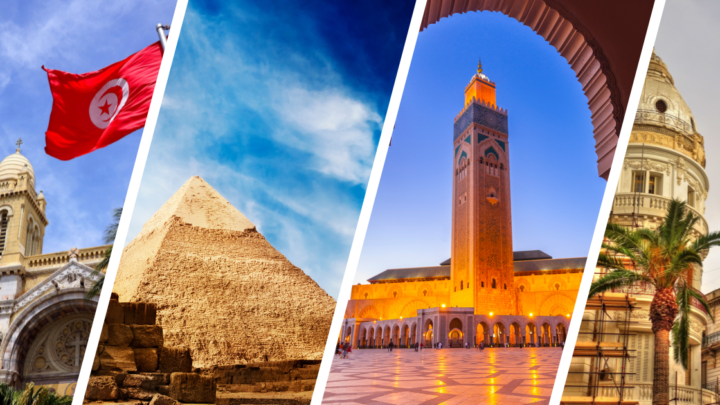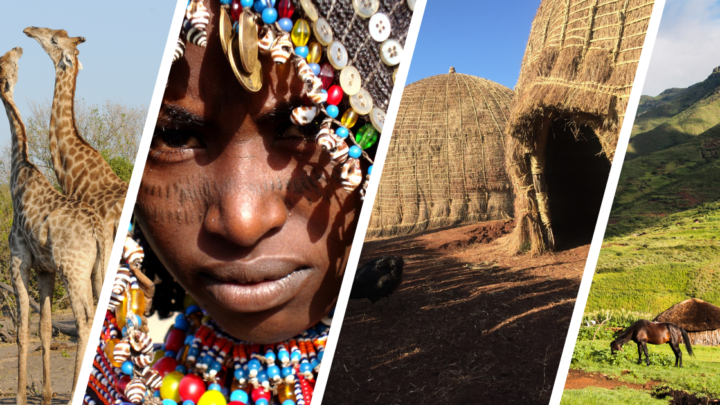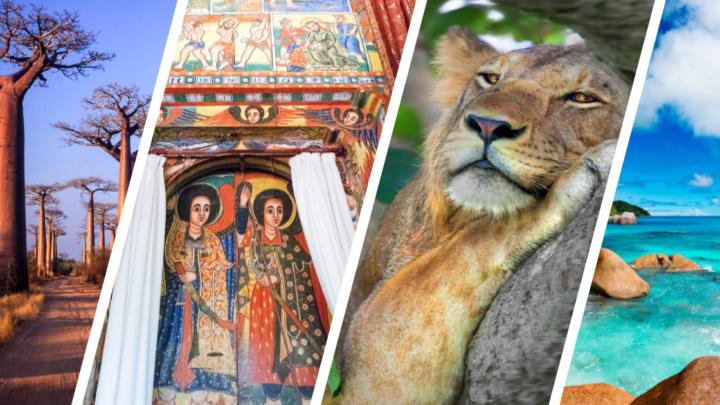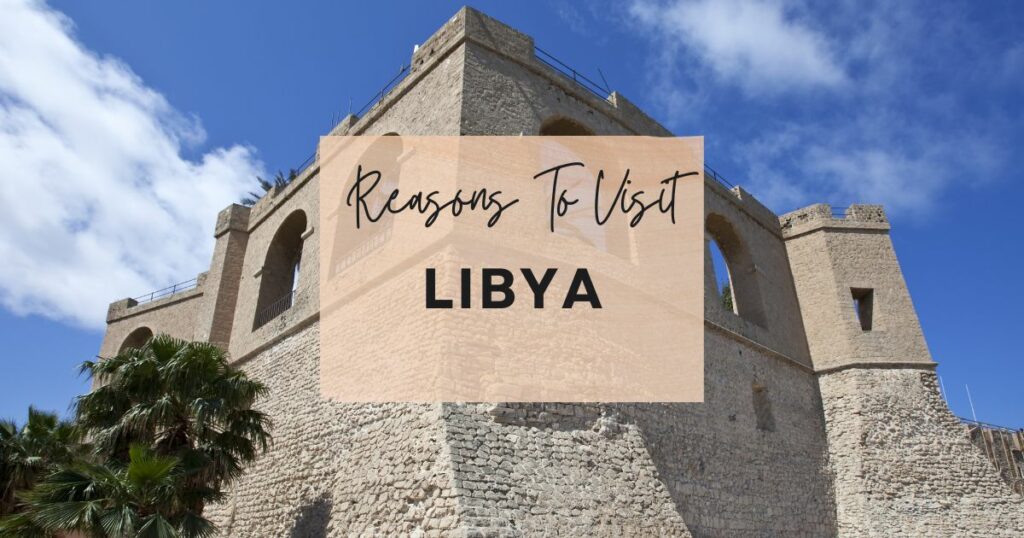Libya offers a lot to its visitors! For the best things to do in Libya and the coolest places to visit in Libya. Scroll down for our top travel recommendations in Libya. We at Wondrous Drifter, a Web 3.0 travel startup, have big plans to shake things up in the travel business.
Table Of Content
- Acacus Mountains
- Apollonia
- Arebi Dive Center
- Atiq Mosque
- Benghazi Zoo
- Cave Art of Acacus
- Cyrene
- Ghadames City
- Gurgi Mosque
- Jebel Akhdar
- Leptis Magna
- Martyr’s Square
- Murzuq Castle
- Nalut Ruins
- Ptolemais
- Roman Theater Sabratha (Sabratha Ancient Theater)
- Sahara Desert
- The Arch of Marcus Aurelius
- Tripoli’s Medina (The Old City)
- Tripoli’s Jamahiriya Museum (Red Castle Museum)
- Explore Africa
Acacus Mountains

Wander around and marvel at the natural rock formations here.
These mountains, also known as the Acacus Mountains in Arabic, are part of the Ghat District in western Libya and make up a mountain range in the Sahara Desert.
They are roughly 100 kilometers north of the Algerian border, east of the Libyan city of Ghat. The Berber word for “mountain” is Tadrart, which is the feminine form of “mountain” (masculine: Adrar).
Prehistoric rock art can be found in abundance in the region.
Dunes of varying hues contrast with arches, lonely boulders, gorges, and deep ravines in the Acacus Mountains, which are known for their wide range of scenery.
The area is famous for its rock art and was designated a UNESCO World Heritage Site in 1985 because of the significance of these paintings and carvings.
The paintings, which span from 12,000 B.C.E. to 100 C.E., depict cultural and ecological changes in the region.
Visit one of the naturally formed wonders in Libya and grab all the chances to see these incredible rock formations!
Address: West-Part of Libya, part of the Sahara Desert
Apollonia
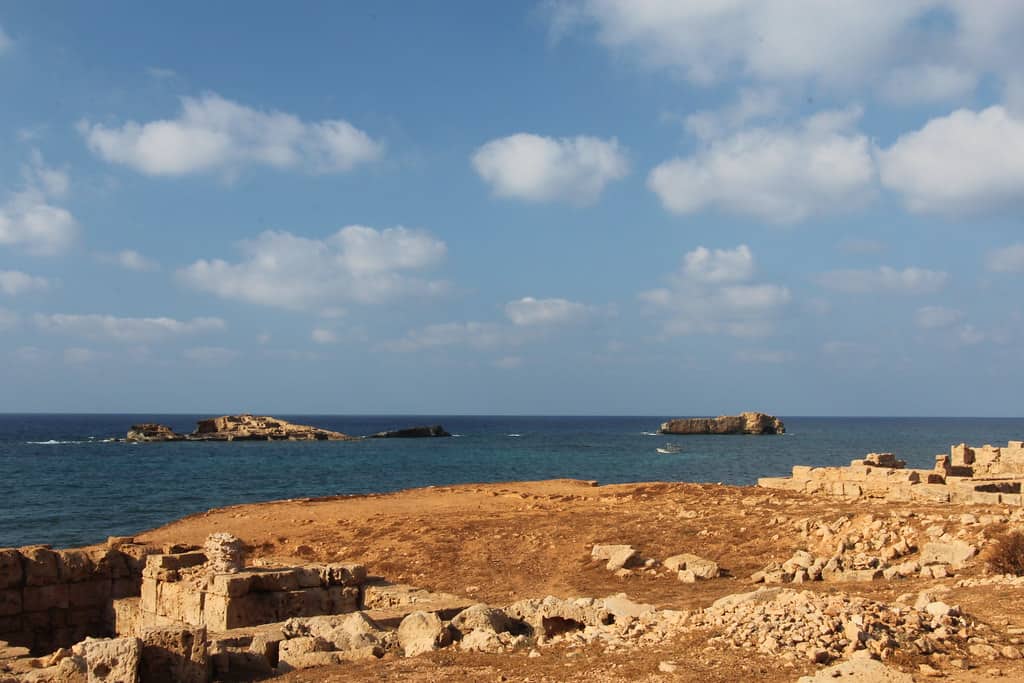
More historic vibes in Libya? This will be the perfect place for you!
Historical Apollonia in Cyrenaica, Libya’s southernmost Greek trade hub.
The Christians pitched on top of many ancient foundations, which are now submerged beneath the ocean’s surface.
The most interesting part of the trip is exploring underwater ruins that date back millennia.
They have local boats that take visitors there. On a clear day, you can clearly see the ruins below the boat’s hull as you slowly cruise through the water. Unfortunately, diving is not permitted.
In Apollonia, three churches can still be seen today.
Eastern church was the largest, with lofty columns and stunning seaside vistas, and you can still see them now if you look hard enough.
A few columns remain in the central church, and most of the walls and marble floors remain intact.
The walls and columns of the West Church are still in place, allowing visitors to fully immerse themselves in the history and grandeur of these structures.
Visit this astonishing history of Libya and experience the local culture with amazing views!
Address: Jabal al Akhdar, Libya
Arebi Dive Center
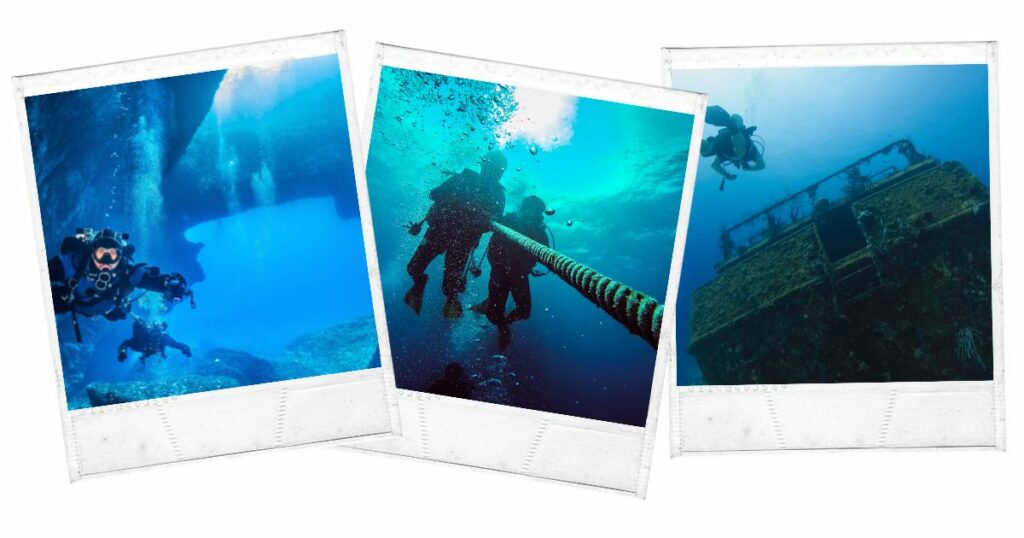
Take an underwater tour and have a once-in-a-lifetime adventure!
Arebi Dive Center is a Scuba & Snorkeling site located in Tripoli, Tripoli District.
It has a scuba diving service on board a boat. Arebi can instruct divers at any level and offer a wide range of diving options, from simple reef dives to deep wrecks that have yet to be explored.
Trimix and trinitrox are also available in the form of steel-cylindered tanks. The high-quality rental equipment was in excellent condition (mostly Mares).
They make fantastic conversation partners when you have some free time to kill. As part of your package, you’ll receive food and drink.
For those qualified to dive into the deep wrecks, there is a unique opportunity to see a variety of fish that have been devastated by net and dynamite fishing.
A full briefing is given before every dive. Less experienced divers will receive assistance as needed. Divers with prior experience are given full rein.
Since there are so many WWII shipwrecks around, you’ll definitely want to return.
Experience this fantastic underwater adventure when visiting Tripoly in Libya!
Address: Tripoli, Tripoli District
Atiq Mosque
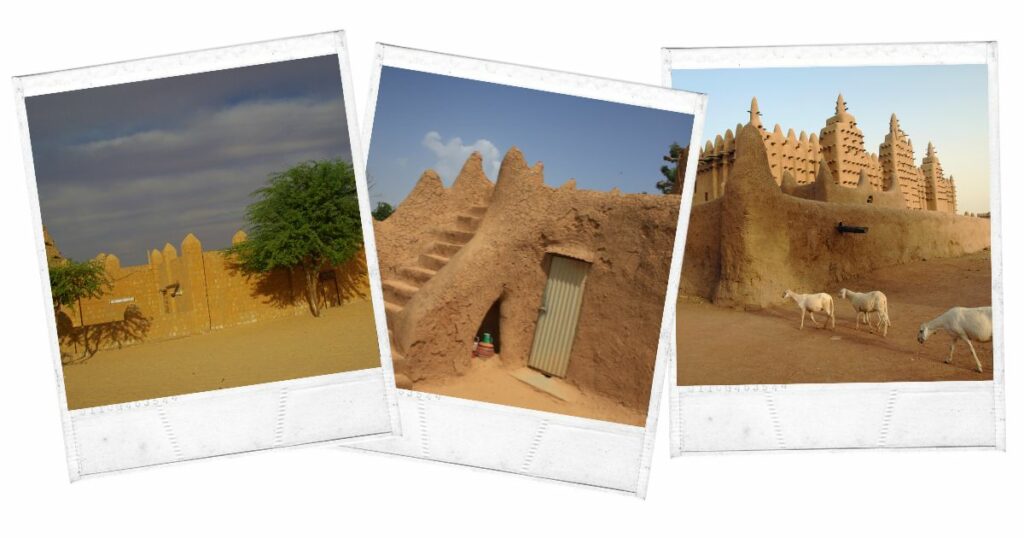
See it with your own eyes! One of the most beautiful and oldest mosques in the world!
Two palm-tree-lined stalls mark the entrance to one of Libya’s most magnificent mosques.
Initially built in the 7th century to welcome Muslim pilgrims and caravans passing through the area, the whitewashed mud-brick construction still stands today.
Travelers from across the ancient world came to the mosque in Awjilah during the heyday of the Sahara caravan trade routes, which made the oasis city a vital halt on the road to Cyrenaica.
The place of worship has nine doors that open to a labyrinth of pillars and arches covering an area of more than 400 meters squared.
There are 21 snow-white conical beehive domes on the building’s exterior, which is even more stunning.
Old Awjilah’s beehives dominate the skyline, which was meticulously restored in 2006 after the city became one of the most convenient sites to witness the solar eclipse in March 2006.
Check and be amazed at this mosque and how it is being taken care of after long years of history!
Address: Awjilah, Libya
Benghazi Zoo

Have a visit to this zoo, park, amusement park, and family-friendly place!
The Benghazi Zoo was founded in 1956 and is known as IL Bosco. It is a zoo and a tourist attraction all in one.
The zoo is home to thousands of animals and various birds in this park, including tigers, bears, elephants, horses, mountain goats, and deer.
As a bonus, there’s an artificial lake and a variety of fun, family-friendly games to keep everyone entertained.
A variety of amusement rides can be found around the zoo, so visitors of all ages will have a good time.
As part of a $2 million deal struck in 1991 by Italian firm Cairtieri Trieste to deliver a low-draught boat dubbed Al-Berka, visitors to the national park can enjoy lagoon tours. It used to be called Il-bousko.
A tourist attraction with adventure and man-made lagoons for you to visit this place, not only the animals but everything within this area are surely worth visiting!
Address: Banghazi, Libya
Cave Art of Acacus
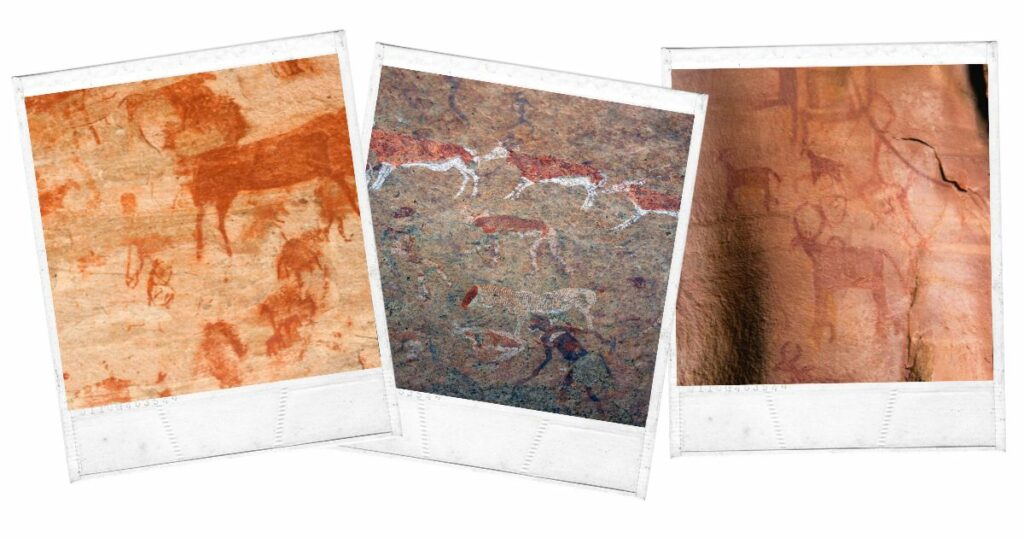
The art of the old generation is surely one of the most enticing places to visit!
Two characteristics set the Rock-Art Sites of Tadrart Acacus apart as a UNESCO World Heritage Site.
Ancient cave paintings span from 12000 BC to 100 AD, as well as its alien-like, jagged environment of weird basalt monoliths, towering granite mountains (the highest point is 1506m), unending wadis, and mushroom-shaped rock formations.
There are a number of Tadrart Acacus rock-art sites located in a large desert area north of the Libyan town of Ghat.
Located in some places in Algeria, the Tassili N’Ajjer World Heritage Site borders the Acacus mountain range in this region.
The Tassili N’Ajjer and the Tassili N’Ajjer together make up the world’s premier rock-art area, with hundreds of carvings and paintings.
They reveal significant shifts in the local flora and fauna, as well as the diverse lifestyles of the successive populations that inhabited this part of the Sahara.
Visiting a part of history while still preserved and can still be visited is always a great idea. Visit this cave now!
Cyrene
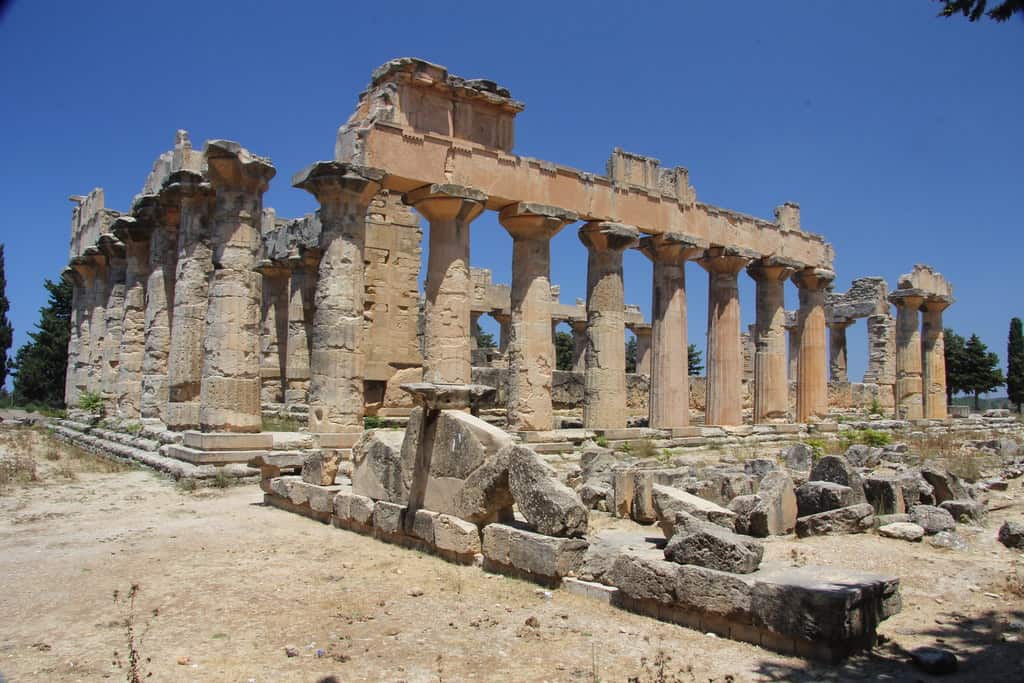
It’s worth a trip to Libya to see Greek history!
Cyrene, an ancient Greek and later Roman city near the Libyan city of Shahhat, was the oldest and most important of the five Greek cities in the area.
It gave eastern Libya the classical appellation of Cyrenaica, which it has kept into current times. The ancient Necropolis of Cyrene is just a short drive away.
Greeks from Thira (known as Santorini) left their island more than 2,000 years ago in quest of a new home. They arrived in modern-day Libya at the end of their expedition.
Cyrene was the name given to the new city by these Greek settlers. Battus, the city’s first king, was sworn in not long after its founding in 631 BCE.
The Battiad dynasty had its genesis with Battus, the first prominent member of the family.
Cyrene, which was added to the UNESCO World Heritage List in 1982, is one of the most neglected and threatened monuments in the Mediterranean Basin because of poor repair and massive looting of Greek artifacts.
Check out this attraction before it’s gone! This is one of the coolest historical places in Libya!
Address: Jebel Akhdar, Libya
Ghadames City
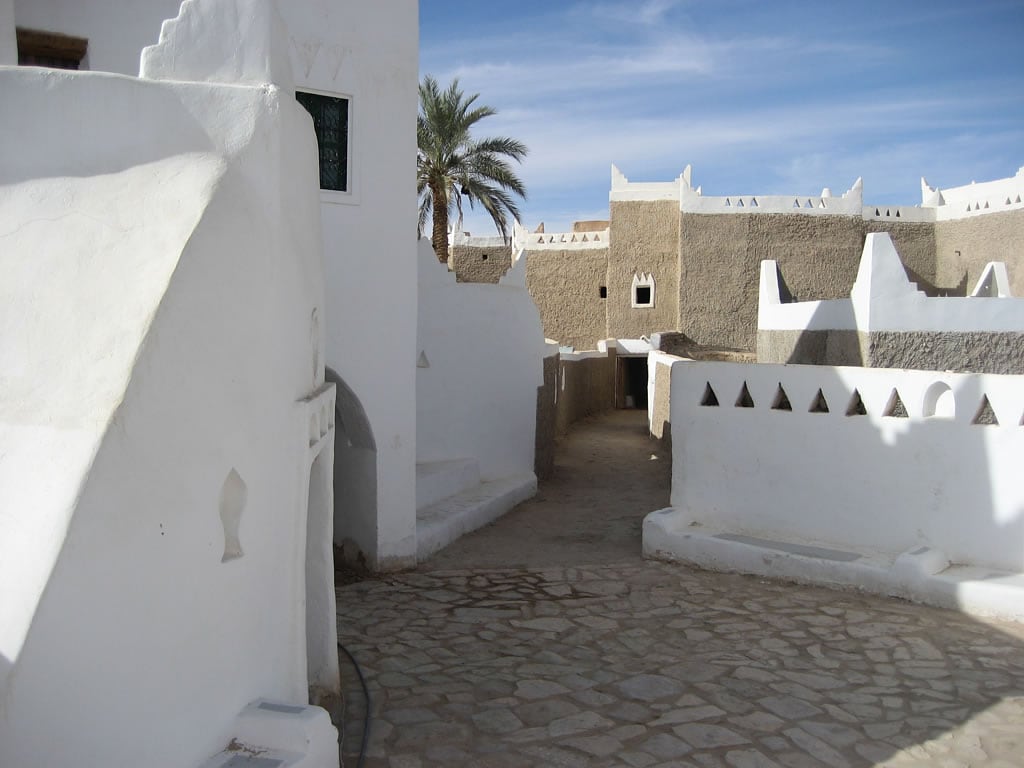
Check out this amazingly-historic pre-Saharan city!
Ghadames is a Berber town in Libya’s northwest. Temehu asserts that this village has been inhabited since the Paleolithic period.
Ghadames’ Old Town is an excellent example of a pre-Saharan city. The white structures in the middle of the dark desert sand have earned Ghadames the nickname “the pearl of the desert.” Mud-built structures are of special importance in this case.
This allows for cooler temperatures while keeping heat throughout the cold nighttime hours.
UNESCO has designated this monument a world-historic site because it meets criteria V.
As a result, the site is a representative example of a traditional human settlement (land use or sea use), which is representative of a culture, or human interaction with the environment, especially when it has become vulnerable to the impact of irreversible changes.
The Old Town of Ghadames has many constructions that aren’t your ordinary ones.
Second-story living is reserved for the family, while the first level is utilized for storage.
On the other hand, how the rooftops are utilized is quite intriguing. Ghadames has about 1,300 homes, and the roofs are all connected.
Explore one of the oldest unique architectural designs in the world’s history!
Address: Nalut District, Libya
Gurgi Mosque
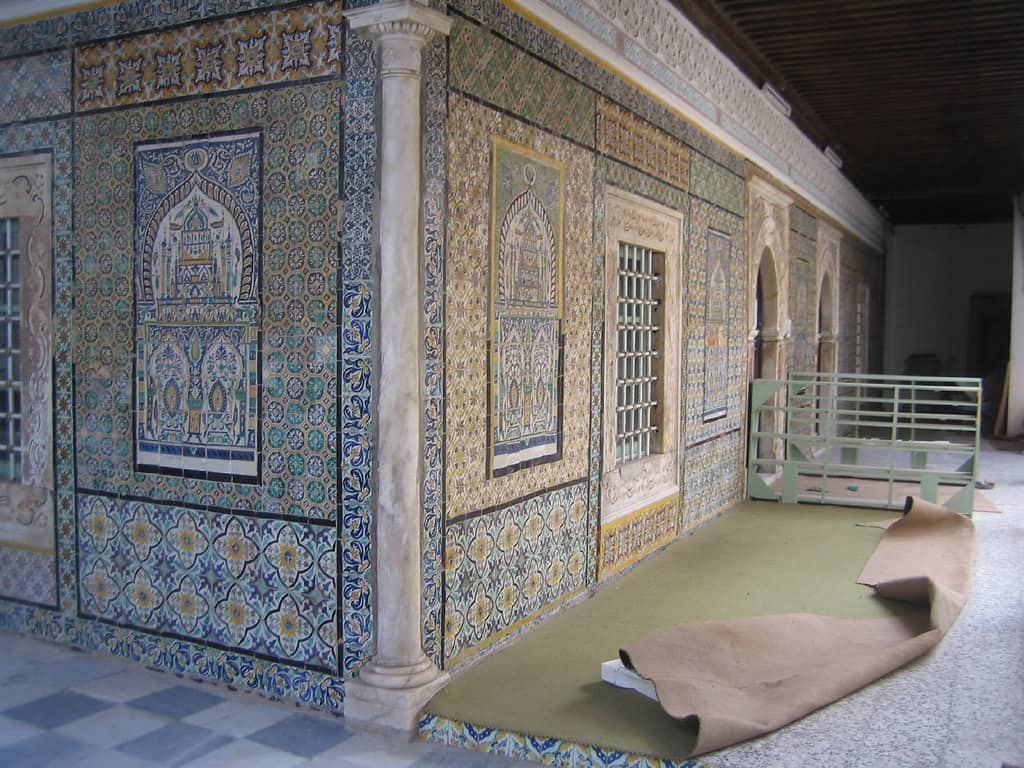
It’s always a good idea to visit a place with a lot of history!
The Gurgi Mosque in Tripoli is one of the city’s oldest mosques. It is located in Tripoli’s “Medina” (Old City) as part of a historic building complex.
The Roman Arch of Marcus Aurelius is just across the street from the mosque, making it a popular stop for visitors to the Libyan capital.
Built in 1834 by Sultan Yusuf Pasha Al-Qara Manali on directions from Ottoman naval captain Mustaf Gurgi, the mosque bears his name.
The mosque in Tripoli is a remarkable example of Tripoli’s devotion to Islamic architecture and places of worship, as evidenced by its ornate design.
The historic monument incorporates elements of European and Islamic architectural styles to create a single work of art and aesthetic value.
Using natural marble on the walls and columns and multi-colored tiles on the floors, it creates a sanctuary that is truly inspiring and enchanting.
Be enticed by checking out this inspiring place from our brothers in Muslim!
Address: Tripoli, Libya
Jebel Akhdar
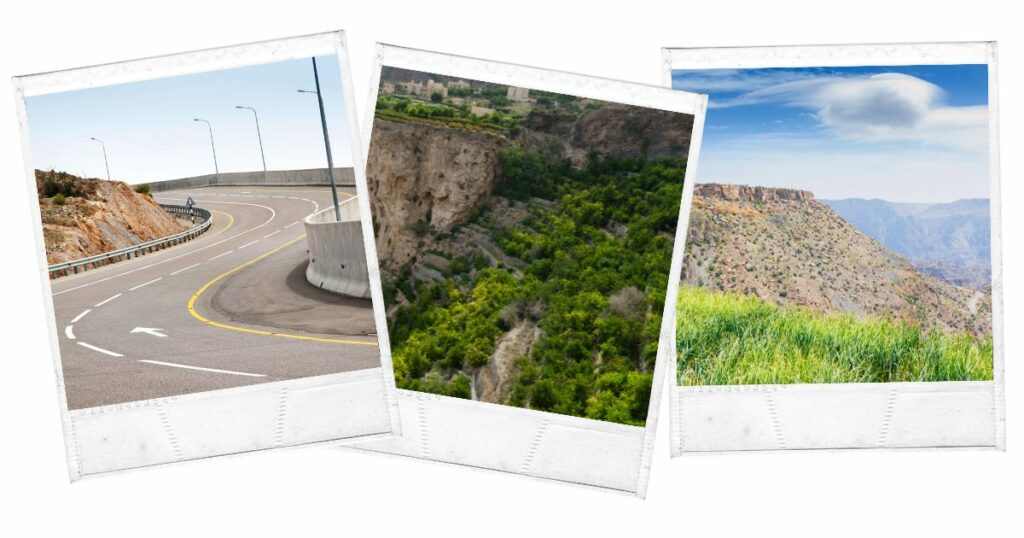
Visiting the mountains and other well-preserved natural areas is always a treat!
The eastern Libyan mountain range known as the Akhar Mountains (also written Gebel El-achdar) spans about 100 miles (160 kilometers) between the towns of al-Marj and Darnah along the Mediterranean coast.
Forested al-Buenain desert and the Libyan Sahara may be seen in the distance to the east.
The mountain series is bounded by river valleys and covered with sparse low brush, the remains of scrub forests, and scattered farming.
Italy invaded Cyrenaica’s Akhar (Arabic: “Green”) area in the 1930s, which was the most promising portion of Cyrenaica.
Libyans have retaken the settlements that were abandoned after World War II and then abandoned.
Camel, goat, and sheep herding in the highlands necessitates some nomadism, while agriculture is limited to the al-Marj plain and the area surrounding Darnah, where grain, olives, grapes, and almonds are produced in small quantities.
Reclamation and irrigation have been improved as a result of a significant agricultural project in the area. During World War II, the mountains served as a vital battleground.
Not only natural resources but a historic place to visit, a place where Libya fought for its liberty!
Address: Districts of Derna, Jabal al Akhdar, and Marj
Live for memories, not possessions. Go travel as there is so much to see in the world. For the full list of countries to visit around the world, visit our best countries to visit around the world guide. You can’t see the world without stopping by the United States. There will always be something in America that could be a great fit for you and your family! Discover the what are the best states to visit in USA?
Leptis Magna
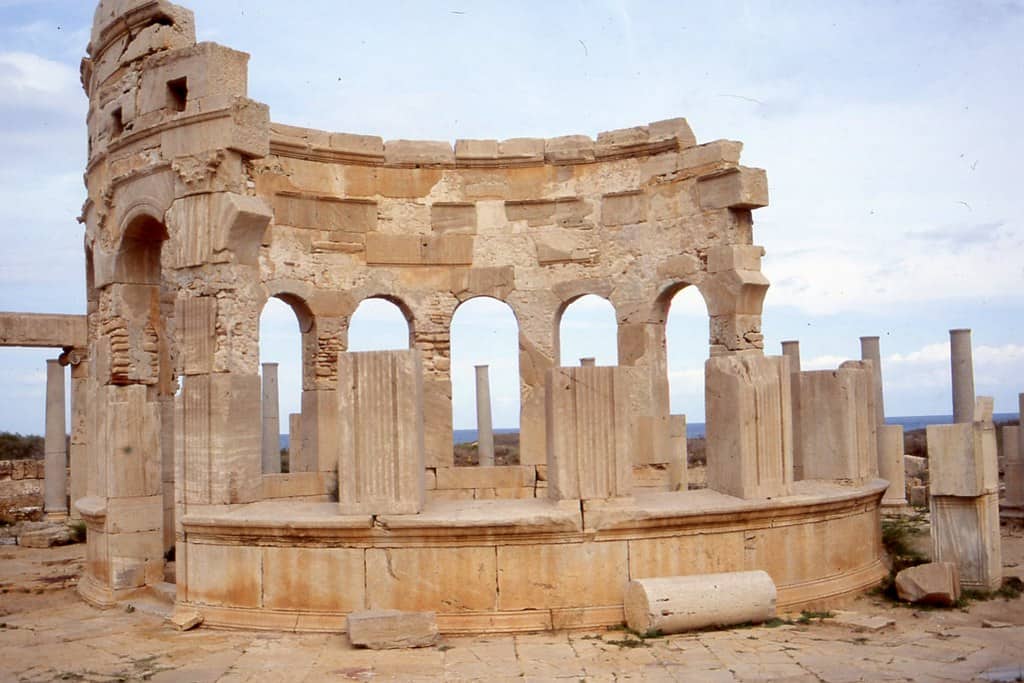
Uncover the history of Ancient City here!
In the ancient Tripolitania region, Leptis Magna, also spelled Lepcis Magna, and in Punic transliteration, Labqior Lpqi is the largest city. It is 62 miles (100 kilometers) southeast of Tripoli on Libya’s Mediterranean coast.
In the 7th century B.C.E., Tyre’s or Sidon’s Phoenicians founded the city, which was later settled by Carthaginians, most likely near the end of the previous century.
As a significant Mediterranean and trans-Saharan trading hub, the city’s natural harbor at the mouth of the Wadi Labdah served as a market for agricultural products from the fertile coastland region.
The Italian archaeologists and Libyan Antiquities Service have worked tirelessly to conserve and research the monument since the early 20th century.
British archaeologists and art historians Colonel Mortimer Wheeler, together with Major John Ward-Perkins, intervened to prevent the Royal Air Force from building a radar station on the site during World War II.
The Al-Saraya Al-Hamra castle and Leptis Magna Museum of history and archaeology in Tripoli display many of the artifacts found there.
Check out this Phoenician city and be amazed by the history that you will discover here!
Address: Districts of Derna, Jabal al Akhdar, and Marj
Martyr’s Square
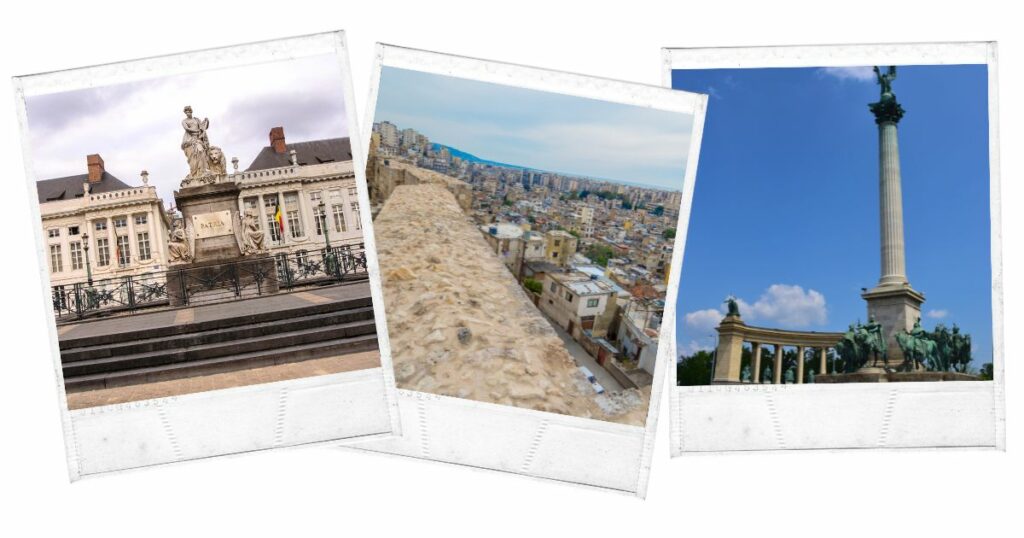
Once a historic site, it is now a must-visit destination.
During the civil conflict that began in 2011, the square was the site of political demonstrations, and it played a pivotal role in the Battle of Tripoli that same year.
During the time of General Gaddafi, Independence Square, and Piazza Italia (when it housed a bread market), the square was known as Green Square. Today, a commercial district surrounds the area.
You can window shop and browse for a variety of products and then relax with a cup of coffee or a meal near the open square, which provides a view of the city harbor.
Other significant buildings in the area include the national museum as well as a huge fountain that the residents frequently use as a gathering place.
Take some time to explore Martyrs’ Square, which for many years has been used as the central location for the city’s socializing as well as its key events.
Address: Tarabulus, Libya
Murzuq Castle
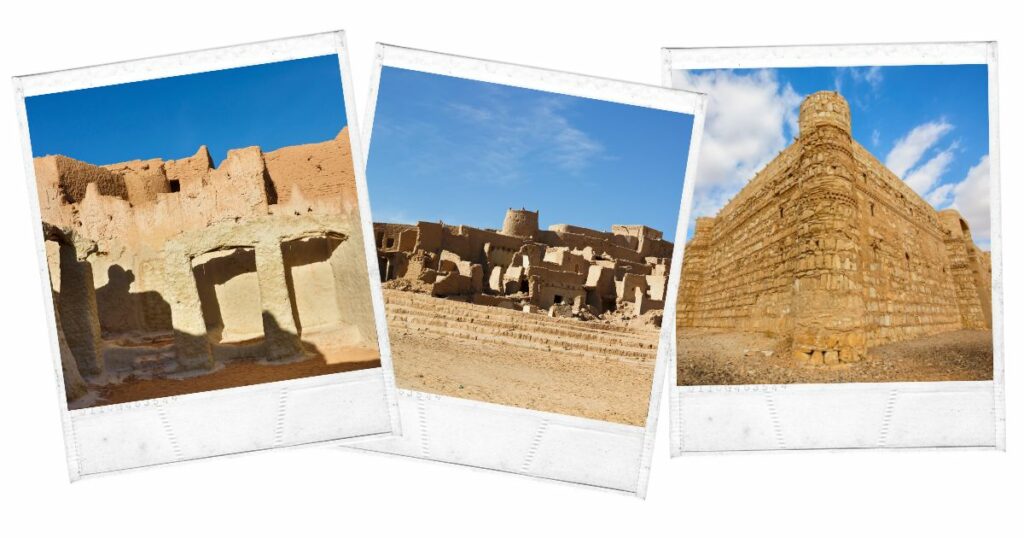
A castle that is made up of clay but became a big part of Libya’s history? Check out this place!
The Murzuq castle was constructed out of clay and dates back to 1310 CE. The castle, which once served as the heart of the Sultan, currently occupies a defensive position on the highest point of a hill.
A road leading up to the castle and some of its walls are both made of stacked clay bricks.
At the very top, there are 360-degree views that take in the entire city.
As you emerge from the castle’s massive walls, you’ll find an ancient mosque with magnificent architecture. Like the castle, it is made of clay.
There are also Muslim burials hidden beyond the wall.
Near the Murzuq Castle, you’ll also find the ‘Murzuq Sand Sea.’ It is surrounded by high dunes.
This area was formerly a thriving oasis. Awe-inspiring beauty provides plenty of photo ops and memories to take back home.
Don’t miss out on this sandy, historical experience in Libya and be impressed by every detail of it!
Address: Fezzan, Libya
Nalut Ruins
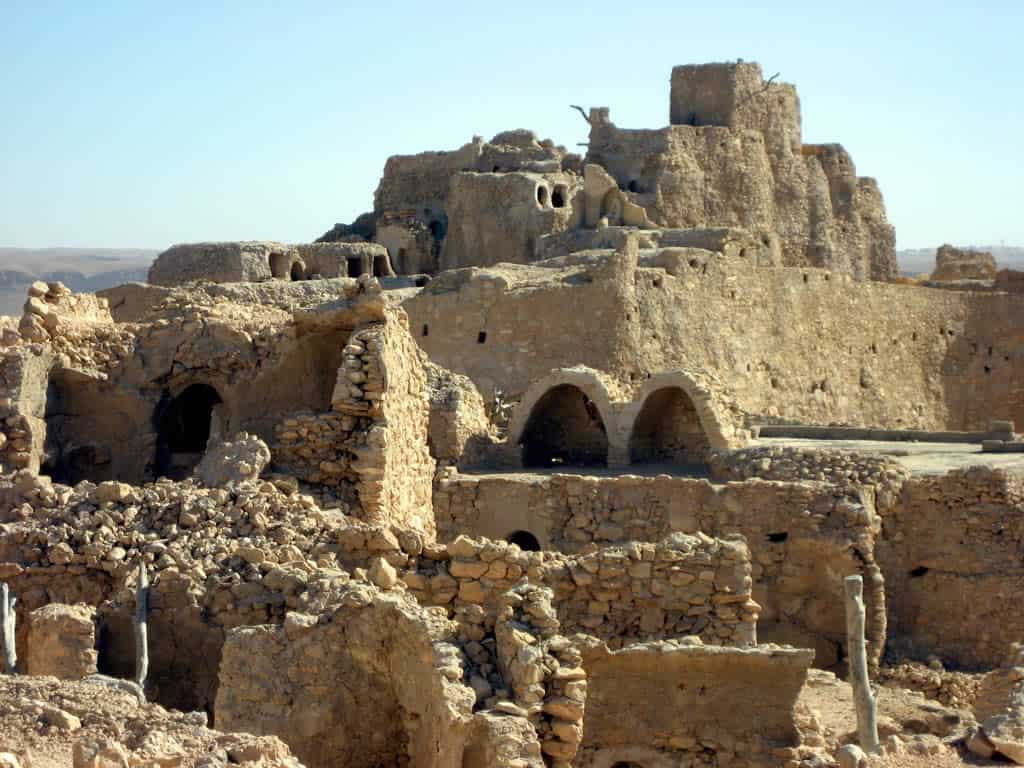
An old place where you can relax and, at the same time, explore history!
Narrow alleyways thread their way through the ruins of the old town of Nalut, which features caves, granaries, and the foundations of a fortress.
Due to its strategic location, the town played a significant part in the region’s commerce.
The majority of the structures that are now ruined were formerly used as granaries by the people who lived in the homes that surrounded them.
You are able to visit the old granary, which has more than four hundred rooms and was formerly used by people to store oil and grains. In addition to that, business was done inside of the structure.
Caves and springs may be found in the surrounding area, and if you want to learn more about the history of the area and the folklore associated with it, you should consider hiring a guide.
Visit the Nalut ruins, and while you’re there, find out what else you can see in the area.
Address: Tripolitania, Tripoli, Libya
Ptolemais
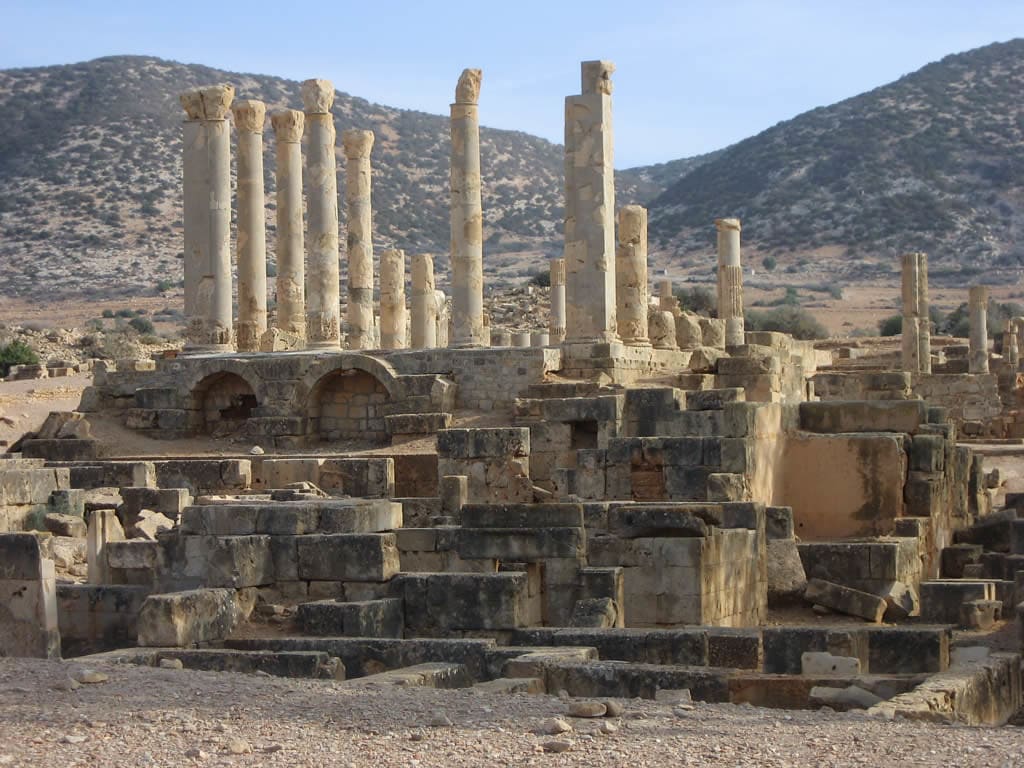
Explore the remains of the ancient city of Ptolemais!
Near the sea and the lower spurs of the Jebel el-Akhdar (Green Mountain), the ancient city of Ptolemais lies between two wadis that run from the hill of the Mountain to the sea: Wadi Ziwanah on one side and Wadi Khambis on the other.
It’s about 110 kilometers east of the current city of Benghazi.
In the 7th century B.C., the city was established as a port for the city of Barka.
The excavation of this well-preserved site, which had been covered in sand for a long time, began in the 1930s, and it unearthed a rectangular city of 2.6 square kilometers (1 square mile) in size and consisting of blocks and columns.
You can also find one of its best features, the “Royal Tomb or Mausoleum” in Ptolemais, a tower-tomb of Hellenistic antiquity, which is more than 15 meters tall.
This is one of Cyrenacia’s major cities, and there is a lot of history to be found here.
Address: Cyrnacia, Libya
Roman Theater Sabratha (Sabratha Ancient Theater)
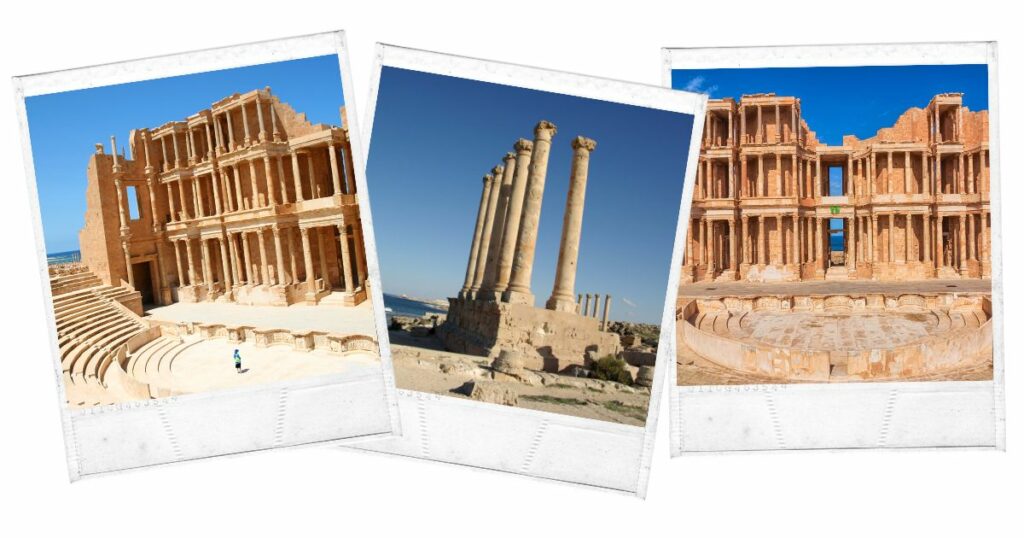
Sabratha’s most popular tourist attraction is a theater that has existed for a long time.
Built between 150 and 200, Sabratha’s Roman theater is one of North Africa’s largest.
It was begun by Marcus Aurelius, maintained by his son Commodus, and finished by Septimius Severus, who was born nearby at Leptis Magna and raised throughout Marcus Aurelius’ rule.
There are 25 entrances to the theater, which can hold about 5,000 people. Archaeologists in Italy reconstructed much of the Roman edifice in the 1930s.
The stage is almost totally intact in the theater, which has been well-preserved. Arches with bas-reliefs adorned the seating section’s back wall support.
The chairs were enclosed by a semi-circular passageway on the ground floor and upper tiers.
It’s possible to see the stunning remnants of the three-story theatre, as well as temples and the impressive ruins left behind by the luxurious Roman villas, including several that feature well-preserved mosaics.
The Byzantine-era Basilica of Justinian can also be located near the theater.
The museum has a wealth of information, displays, and artifacts to get you started on your journey.
Visit this place! A UNESCO Heritage Site is a place where you will experience and explore history!
Address: RF3M+XXQ, Sabratah, Libya
Sahara Desert

The most popular place to visit in Libya!
The Sahara is the world’s largest hot desert and the third-largest desert overall, an area about as large as the United States (including Alaska and Hawaii), and is one of the harshest places on Earth.
It covers approximately a third of the African continent. “Desert” is the Arabic term from which the desert gets its name.
Most people know the Sahara desert for its famed dune fields, although the desert contains a wide diversity of geographical features.
Saharan conditions are harsh, but many plant and animal species have made a home there. 500 plant species, 70 mammalian, 90 bird, 100 reptilian, and numerous small arthropod species are found in the Sahara Desert, according to the World Wildlife Fund.
Quad biking, sand surfing, camping, and trekking are just a few of the activities available in the Sahara. In our Sahara Desert Trek, you can spend four days trekking the Chegaga Dunes to the top!
In the desert’s middle, we’ll see breathtaking dawn and fall asleep under the stars.
Visit Sahara now and experience a wide variety of adventures and check out historical places within the area!
Address: Northern & Eastern Part of Libya
The Arch of Marcus Aurelius
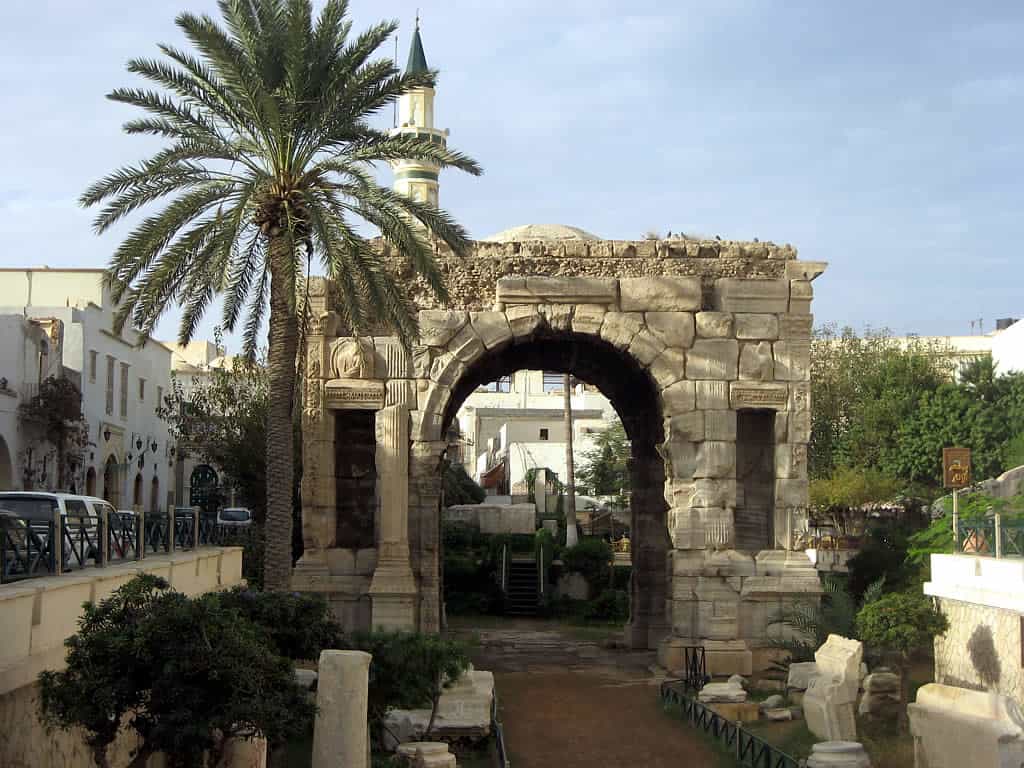
The last thing was standing after all the drastic history that happened!
Around 165 AD, the city of Oea in Libya built the Arch of Marcus Aurelius to commemorate Lucius Verus’ victory over the Parthian Empire and the sacking of Ctesiphon, the capital city.
Today, the Arch of Marcus Aurelius is all that remains of Roman-era Oea!
Oea, which became Tripoli, was constantly occupied from the ancient to the modern era, meaning that many of the ancient buildings were utilized to create others or buried beneath the newer city.
It was repaired as soon as Italy was conquered in World War One and became a popular tourist destination again.
Located in Tripoli, Libya, this monument to the Roman presence in Oea is easily accessible to tourists.
Even though there is a low fence and railing, you may still approach close enough to see the figures on either side of the triumphal arches, who are thought to be Apollo and Minerva.
This is a must-see, especially in the evening when the sunset illuminates it! Check and don’t miss this out when visiting Libya!
Address: V5XG+X88, Tripoli, Libya
Tripoli’s Medina (The Old City)
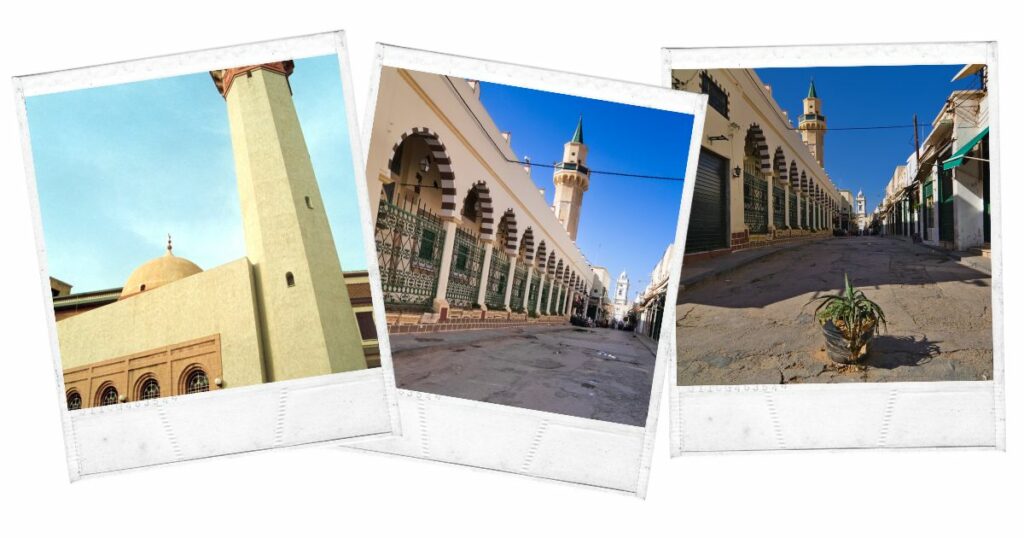
A place to go because this is the heart or the center of Tripoli!
It is the city’s historic heart, located on a bluff above the Mediterranean Sea and encircled by a stone wall.
There are numerous stores, cafes, and other ancient and historical structures, including past consulates from nations like Spain, France, and the United States.
For nearly 50 years, the old city of Tripoli’s commerce and craft markets have extended within its 48-hectare urban framework, taking on numerous architectural forms.
About 29 diverse markets were located in Tripoli’s open-road squares, some of which were covered with roofed corridors.
There are eight entrances to the old city’s outside wall.
At one time, it was known as Ban Al-Khandaq (trench) due to its proximity to a trench that surrounded the castle and was buried by sea water before being refilled and turned into the Al-Khandeq (trench) Road.
This gate, known as Bab Al-Menshia or Bab Hawara, is located at the entrance to the Al-Mushir Market, directly across from Martyrs Square. It is one of the city’s oldest gates.
Visit this historic city square, have some drinks, shop, and discover historical structures all in one place!
Address: Tripoli, Libya
Tripoli’s Jamahiriya Museum (Red Castle Museum)
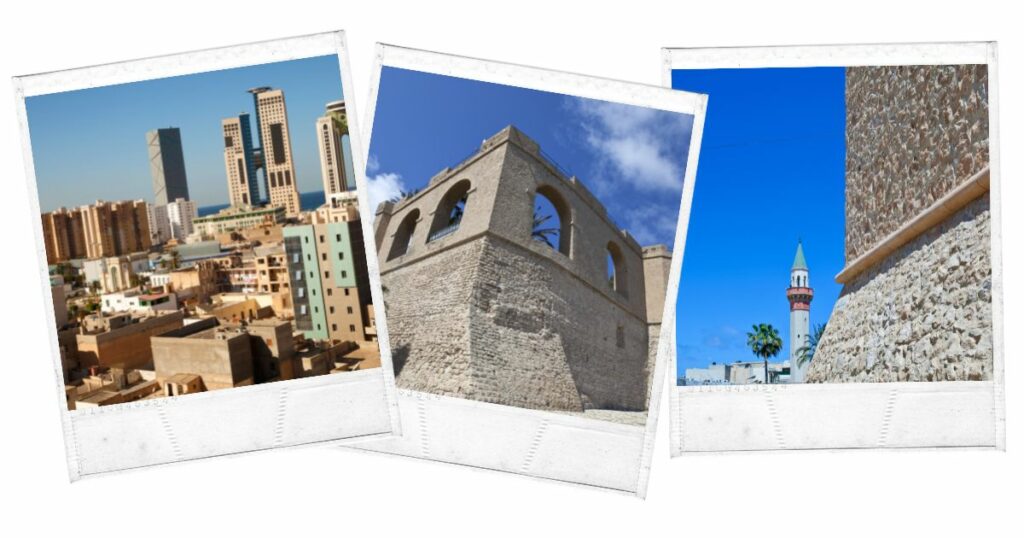
Explore one of the most popular tourist spots in Libya and see what all the fuss is about.
Red Castle Museum, also known as the Assarayah Alhamara Museum, is located in Tripoli’s central Green Square (formerly known as Martyrs’ Square), with an entrance on Jamahiriya Museum’s Green Square.
In Tripoli, the Jamahiriya Museum is one of the city’s most famous tourist attractions. The Libyan National Museum attracts visitors from all over the world who are eager to learn more about the country’s past.
It is known as “The Red Castle” or “The Red Fort” because it was painted red following the Spanish invasions of 1510 when it was renamed “The Red Castle.”
Since it was created to protect Tripoli’s capital city, the walled castle has served as Tripoli’s political and military hub until the 20th century, when it fell into disuse.
Some of Libya’s most important historical and archaeological treasures are housed in the museum, including a stunning collection of prehistoric, Neolithic, Phenician, Berber, Punic, Garamantian, and Greek treasures.
As well as stone and marble statues and columns, busts, tombs, grave covers, oil lamps, pottery, coins, mosaic panels, and funerary monuments (the Assaraya Alhamra).
Discover a lot of the country’s history by visiting this museum!
Still unsure to make Libya your next destination? Click here for all the reasons to visit Libya at least once in your lifetime here.
Address: V5WJ+H77, Tripoli, Libya

